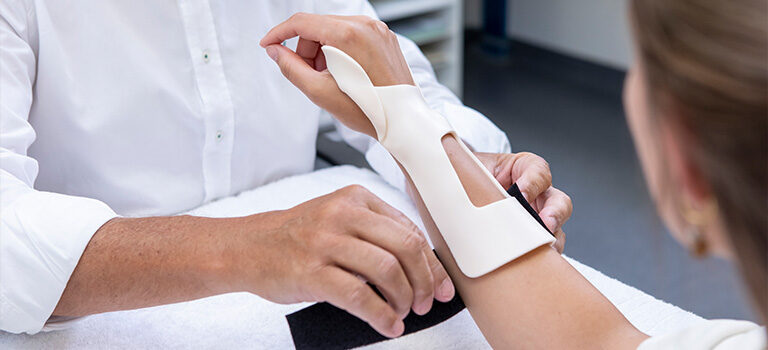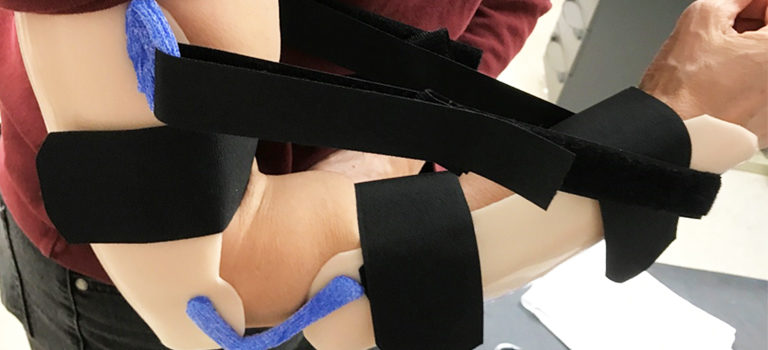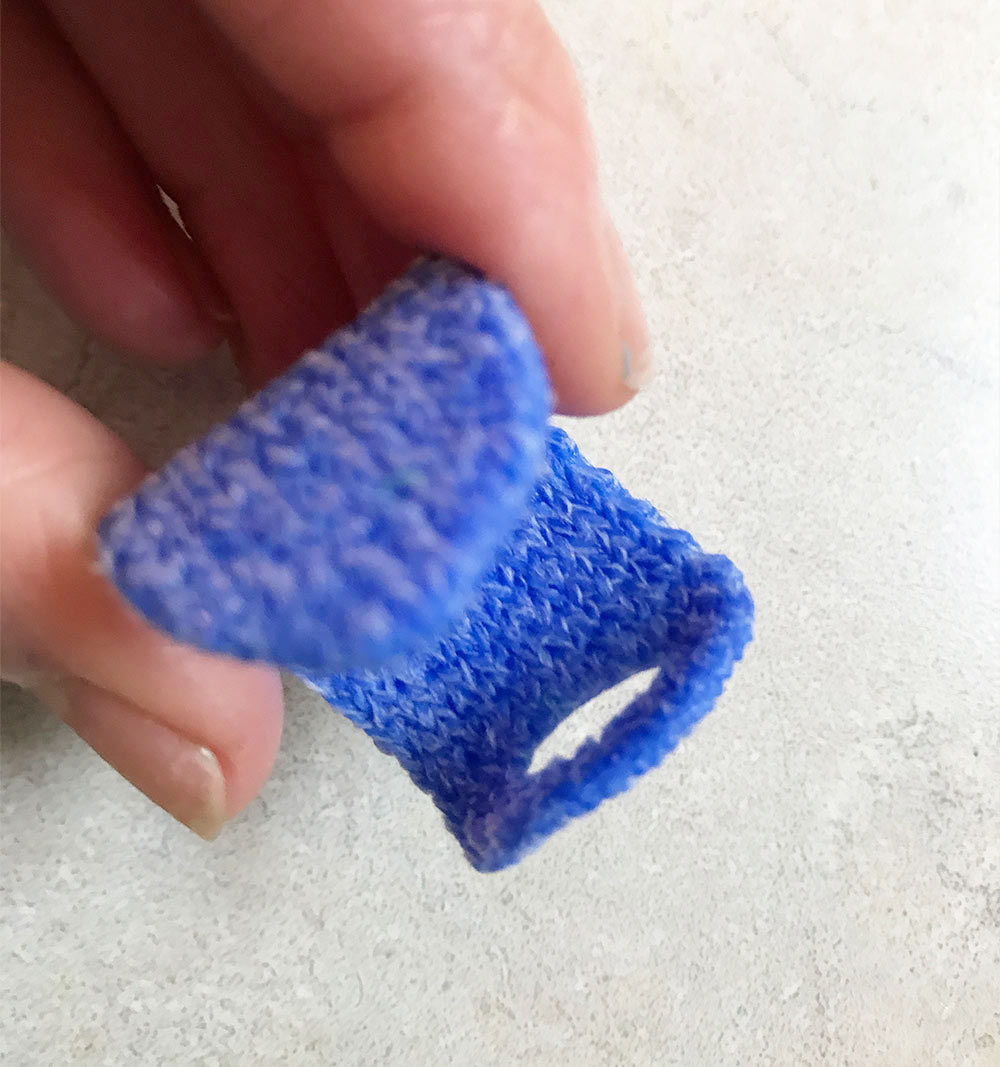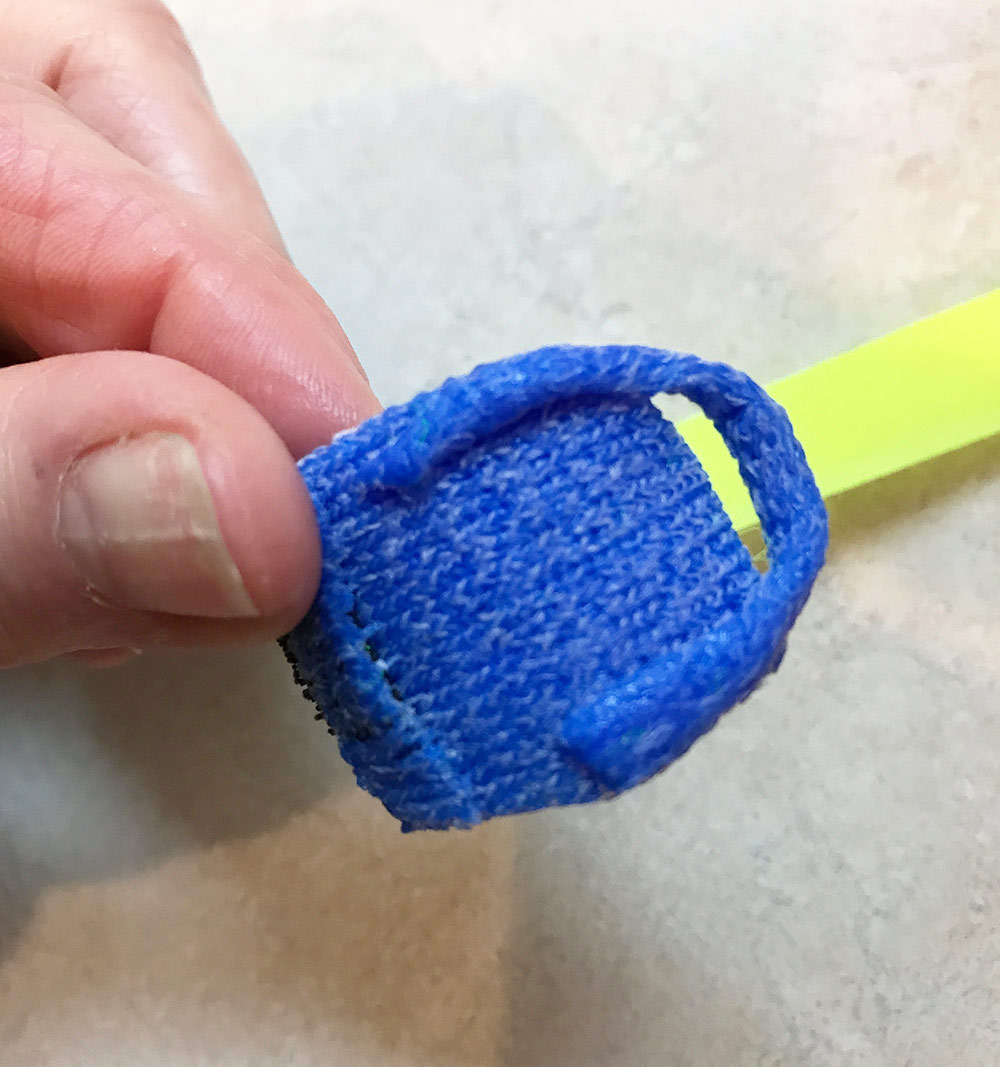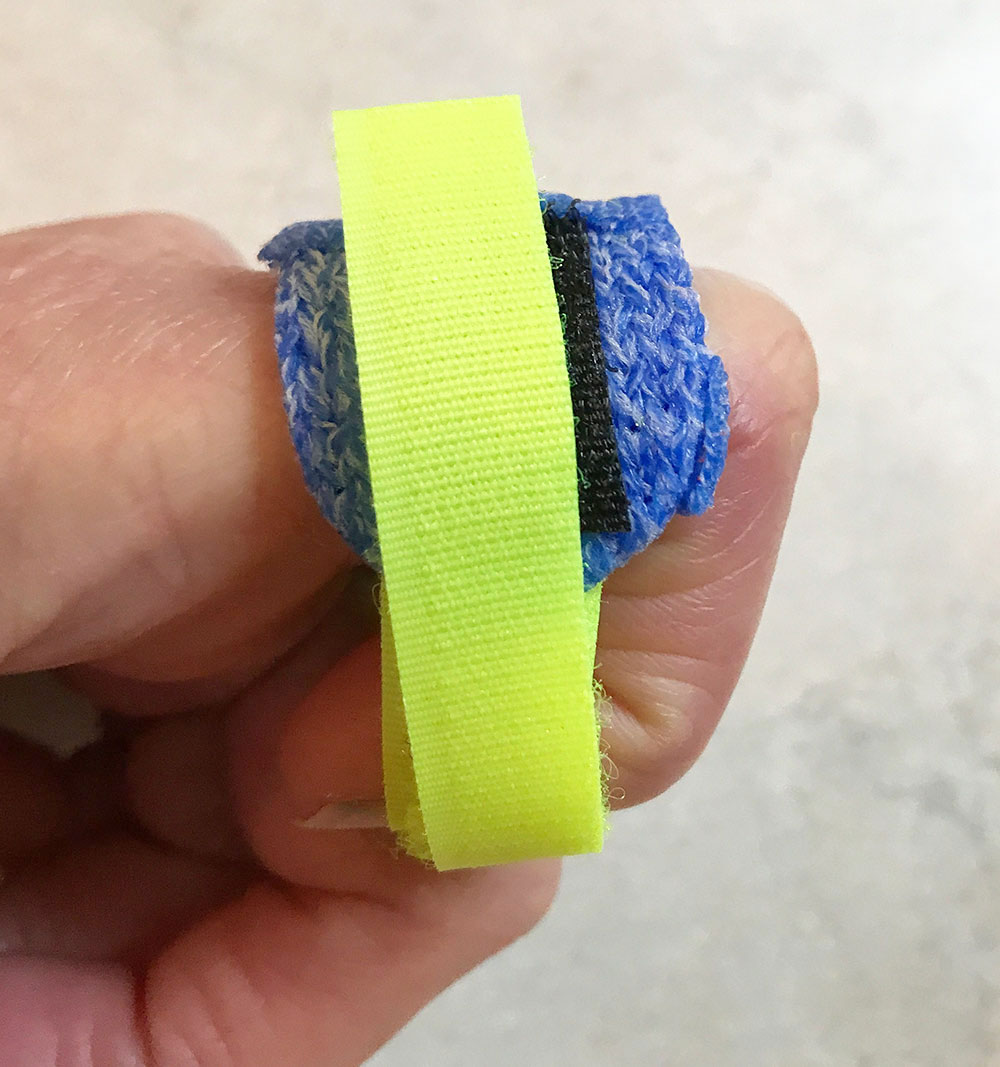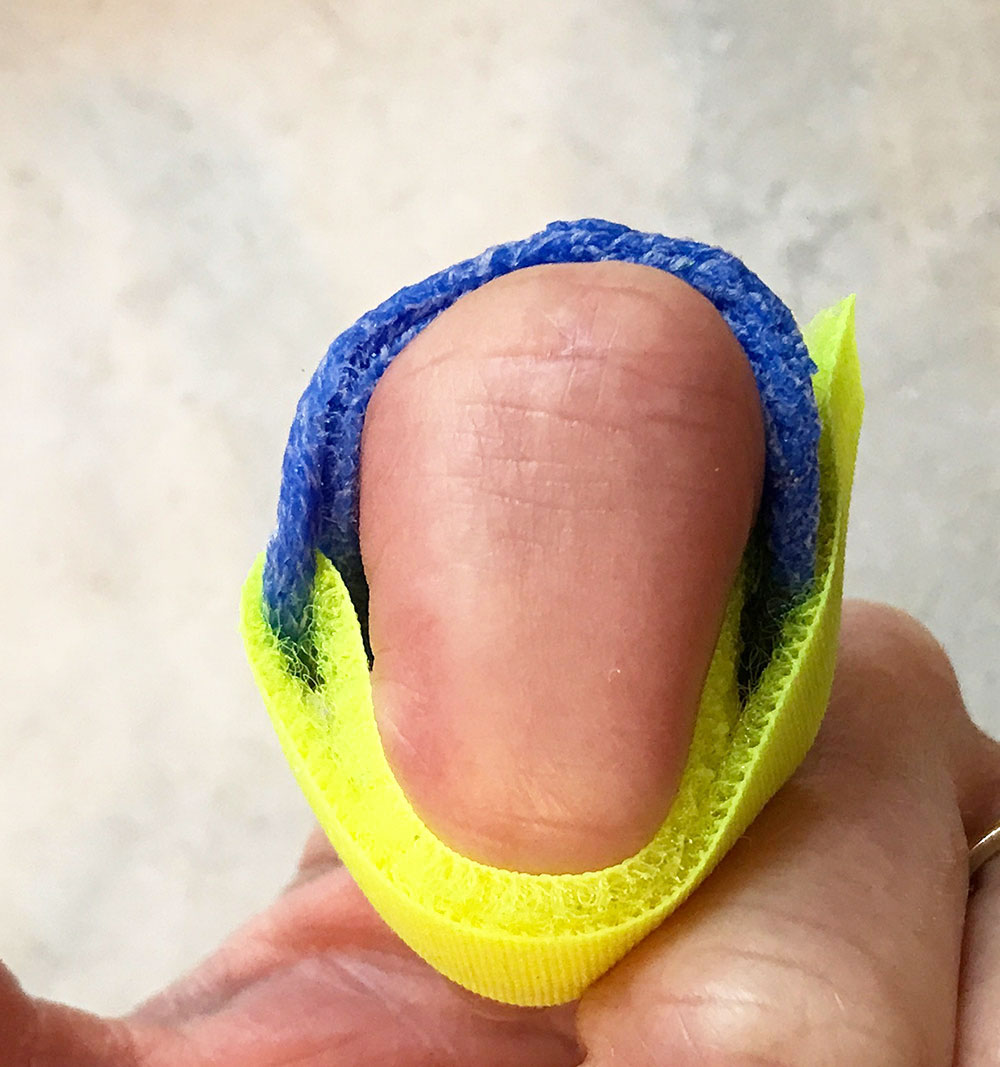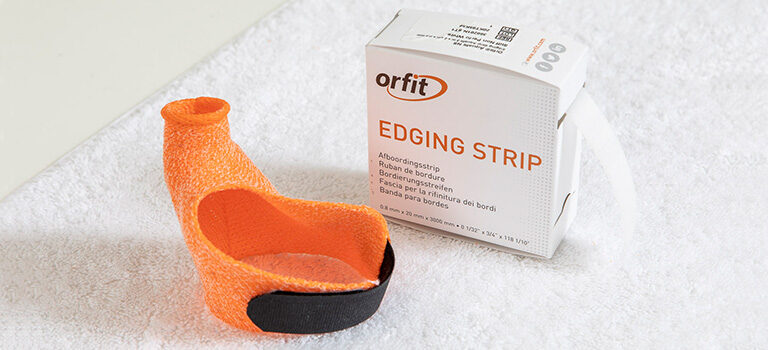
A Static Progressive Finger Flexion Cuff from Orficast
Increase passive PIP and DIP range of motion
A quick and easy finger flexion cuff to increase passive PIP and DIP range of motion can simply be made from Orficast 3 cm (1″).
The orthosis provides low load tension to promote increased PIP and DIP joint range of motion and can help patients with:
- intrinsic tightness
- joint tightness
- extension contractures

Have your patient begin with a schedule of wearing the orthosis 3-4 times per day for about 15-20 minutes and increase as able. While wearing the finger cuff, the patient can also work to increase gliding of the extensor communis tendon of the finger as an exercise.
How to fabricate this static progressive orthosis?
Step 1: Cut a 12.5 cm (5”) piece of Orficast 3 cm (1”). Activate and fold in half, widthwise. Wrap the material around the proximal phalanx of the involved finger and let harden. Round the corners for a clean finish and a comfortable fit.

Wrap the Orficast around the proximal phalanx.
Step 2: Cut a small slit in one end of the orthosis. Make sure it is wide enough to accommodate a 1.30 cm (½”) wide loop strap. Slip the loop strap into the slit.
Alternatively, if it is too difficult to make a slit, a thin ring of Orficast can be added to create an opening for the loop strap. Attach the ring by heating it with the heat gun and carefully press onto the finger cuff.
- Option 1: Make a slit in the material.
- Option 2: Add a thin ring of Orficast.
Step 3: Heat up the inside of the cuff (on the side without the slit opening) with the heat gun and press the loop strap (loop side down) into the heated Orficast in order to adhere it to the cuff. Ensure a secure bond by reinforcing the loop strap with a small piece of Orficast. Read our 6 ins and outs for hook-and-loop straps to learn how you can firmly secure strapping to an orthosis.

Attach the loop strap on the inside of the cuff.
Step 4: Use the heat gun to heat and activate the glue of the adhesive-backed hook tape and attach it to the outer cuff. Add an extra reinforcement to the hook strap with a small piece of Orficast.

Adhere the hook strap to the outer side of the cuff.
Step 5: Have the patient slip the cuff over the proximal and distal phalanges while in flexion, and tighten slightly. The patient should feel low tension, but not pain. The patient can then tighten the cuff as able to increase passive joint range of motion.
- Slip the cuff over the proximal and distal phalanges and tighten slightly.
Questions?
If you have a question or comment, please post it in the Orfit Splinting & Rehabilitation Group on Facebook, or send an email to welcome@orfit.com
![]()

Written by Debby Schwartz, OTD, OTR/L, CHT
Physical Rehabilitation Product and Educational Specialist at Orfit Industries America.
Debby is a certified hand therapist with over 36 years of clinical experience. She completed her Doctorate of Occupational Therapy at Rocky Mountain University of Health Professions in 2010. She has worked at Orfit Industries America as Product and Educational Specialist since 2007.
Debby is also an adjunct professor at the Occupational Therapy Department of Touro University, School of Health Sciences, and at the Occupational Therapy Department at Yeshiva University, Katz School of Science and Health in NYC. She has written many book chapters in the field of hand therapy and multiple articles for hand therapy journals, including the ASHT Times and the Journal of Hand Therapy. She has published a new textbook on orthotic fabrication together with Dr. Katherine Schofield, entitled “Orthotic Design and Fabrication for the Upper Extremity: A Practical Guide”.
![]()
If you’d like to receive the latest product updates and interesting Orfit news, subscribe to our newsletter:

